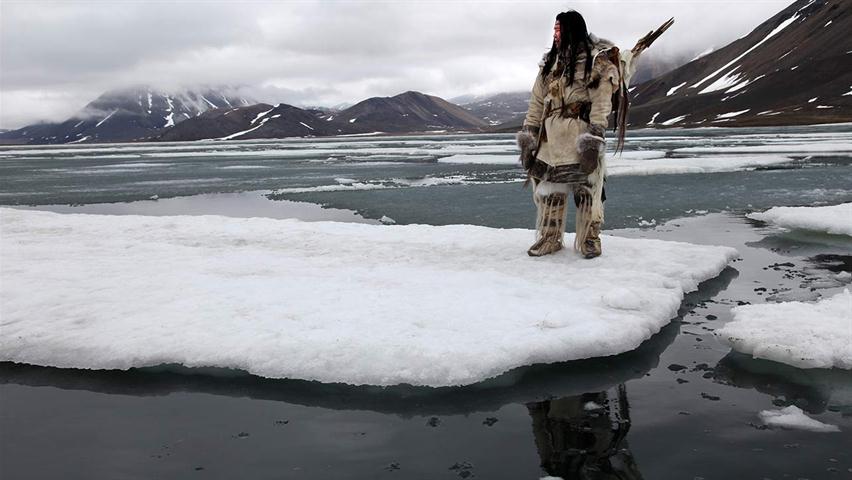
Graphical abstract showing ice age migration routes from northern coastal China to the Americas and Japan. A team of scientists discovered that Native Americans share a female lineage with ancient populations from northern coastal China, adding complexity to the ancestry of Native Americans. By analyzing mitochondrial DNA, the researchers found evidence of two migrations from northern coastal China to the Americas during the last ice age and the subsequent melting period. Another branch of the same lineage migrated to Japan during the second migration, which may explain archeological similarities between the Americas, China, and Japan. This study broadens the understanding of Native American ancestry, which was previously thought to have come mainly from Siberia, Australo-Melanesia, and Southeast Asia. Credit: Li et al.
Researchers from the Chinese Academy of Sciences discovered a female lineage connection between Native Americans and ancient populations in northern coastal China. The study found evidence of two migrations from China to the Americas, with another branch of the same lineage migrating to Japan, explaining archeological similarities between the three regions.
Scientists have used mitochondrial DNA to trace a female lineage from northern coastal China to the Americas. By integrating contemporary and ancient mitochondrial DNA, the team found evidence of at least two migrations: one during the last ice age, and one during the subsequent melting period. Around the same time as the second migration, another branch of the same lineage migrated to Japan, which could explain Paleolithic archeological similarities between the Americas, China, and Japan. The study was published on May 9 in the journal Cell Reports.
“The Asian ancestry of Native Americans is more complicated than previously indicated,” says first author Yu-Chun Li, a molecular anthropologist at the Chinese Academy of Sciences. “In addition to previously described ancestral sources in Siberia, Australo-Melanesia, and Southeast Asia, we show that northern coastal China also contributed to the gene pool of Native Americans.”
Though it was long assumed that Native Americans descended from Siberians who crossed over the Bering Strait’s ephemeral land bridge, more recent genetic, geological, and archeological evidence suggests that multiple waves of humans journeyed to the Americas from various parts of Eurasia.
To shed light on the history of Native Americans in Asia, a team of researchers from the Chinese Academy of Sciences followed the trail of an ancestral lineage that might link East Asian Paleolithic-age populations to founding populations in Chile, Peru, Bolivia, Brazil, Ecuador, Mexico, and California. The lineage in question is present in mitochondrial DNA, which can be used to trace kinship through the female line.
The researchers scoured over 100,000 contemporary and 15,000 ancient DNA samples from across Eurasia to eventually identify 216 contemporary and 39 ancient individuals belonging to the rare lineage. By comparing the accumulated mutations, geographic locations, and carbon-dated age of each of these individuals, the researchers were able to trace the lineage’s branching path. They identified two migration events from northern coastal China to the Americas, and in both cases, they think that the travelers probably set dock in America via the Pacific coast rather than by crossing the inland ice-free corridor (which would not have opened at the time).
The first radiation event occurred between 19,500 and 26,000 years ago during the Last Glacial Maximum, when ice sheet coverage was at its greatest and conditions in northern China were likely inhospitable for humans. The second radiation occurred during the subsequent deglaciation or melting period, between 19,000 and 11,500 years ago. There was a rapid increase in human populations at this time, probably due to the improved climate, which may have fueled expansion into other geographical regions.
The researchers also uncovered an unexpected genetic link between Native Americans and Japanese people. During the deglaciation period, another group branched out from northern coastal China and traveled to Japan. “We were surprised to find that this ancestral source also contributed to the Japanese gene pool, especially the indigenous Ainus,” says Li.
This discovery helps to explain archeological similarities between the Paleolithic peoples of China, Japan, and the Americas. Specifically, the three regions share similarities in how they crafted stemmed projectile points for arrowheads and spears. “This suggests that the Pleistocene connection among the Americas, China, and Japan was not confined to culture but also to genetics,” says senior author Qing-Peng Kong, an evolutionary geneticist at the Chinese Academy of Sciences.
Though the study focused on mitochondrial DNA, complementary evidence from Y chromosomal DNA suggests that male ancestors of Native Americans also lived in northern China at around the same time as these female ancestors.
This study adds another piece to the puzzle that is Native American ancestry, but many other elements remain unclear. “The origins of several founder groups are still elusive or controversial,” says Kong. “Next, we plan to collect and investigate more Eurasian lineages to obtain a more complete picture on the origin of Native Americans.”
- aum
-

 1
1




Recommended Comments
There are no comments to display.
Join the conversation
You can post now and register later. If you have an account, sign in now to post with your account.
Note: Your post will require moderator approval before it will be visible.